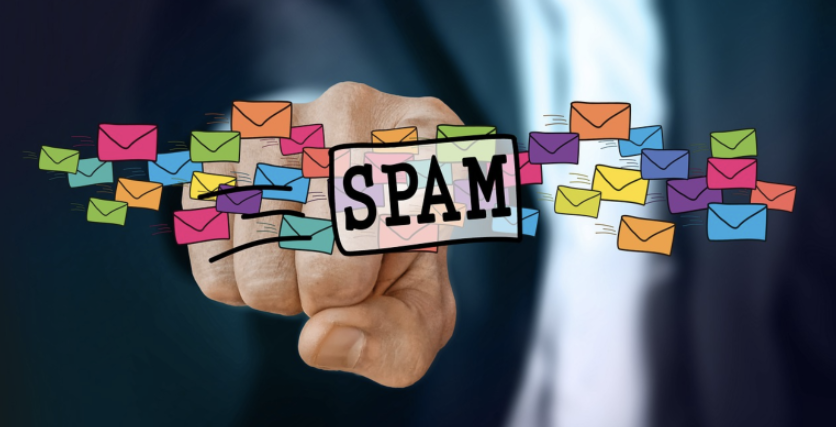Spam comes in many forms, but it’s all junk. Think of all those crazy emails that have wiggled their way into your inbox. You’re the Recipient of a Large Inheritance from the Sultan of Brunei or a Nigerian Oil Barron. Spam is also low-key, like Miracle Meds designed to improve libido, anti-aging, or cholesterol-busting non-statins. Spam comes in many shapes and sizes, but it’s all unwanted, non-solicited marketing gobbledygook.
It comes in digital communication through email, pop-ups, banners, and clickable links. Spam is often disseminated through social media, SMS, and telephone calls. Email spoofing, phishing emails, adware, malware, and other deceptive marketing traps are standard. Many of them are designed to fool you into believing they are authentic. Consider a government-looking email that targets business owners into paying their annual registration fees or work-at-home messaging with promises of payment in cryptocurrency. There are near limitless applications for spam.
Today, we’re going to consider the top ten ways to avoid spam. Let’s get started!
Use a Spam Filter
The first and most obvious solution is to use a spam filter. There are many different types of spam filters, but most email providers will have some form of filtering available.
For example, Gmail has an excellent spam filter that is constantly updated and improved. You can also install a spam filter extension on your browser, like uBlock Origin. Keep your spam filter up to date to get the best protection.
Install Ad Blockers
A blocker app is great for avoiding all sorts of unwanted advertisements – including pop-up ads and banner ads that often contain spammy content. Ad blockers work by preventing ads from loading when you visit websites.
They also block trackers that collect data about your web browsing habits so companies can target ads at you more effectively. Ad blockers can help improve your privacy and security online while also reducing clutter and saving bandwidth! There are many ad blockers available for all popular web browsers- choose one that suits your needs and install it today.
Don’t Click on Links in Emails
This one is pretty simple – if you don’t know the sender, or you’re not expecting an email from them, don’t click on any links in the email. Many spam emails will get you to click on a link that will take you to a website full of viruses or malware.
If you must click on a link in an email, hover over the link first to see where it’s taking you. If the link looks suspicious, don’t click it!
Don’t Give Out Your Email Address
Don’t give out your email address if you don’t want to get spammed! It seems simple enough, but we all do it without thinking sometimes. When you sign up for an online account, use a disposable email address if possible.
Then, if the company gets hacked or sells your information, advertisers won’t bombard your primary inbox with spam. You can also set up a separate email address to sign up for online accounts. That way, your primary inbox stays clean and clutter-free.
Use Strong Passwords
If you use weak passwords, hackers can easily access your accounts and start sending out spam emails in your name! Instead, use strong passwords that are at least eight characters long and include a mix of letters, numbers, and symbols.
Avoid using common words or names as passwords. If you have trouble coming up with strong passwords, many password generators are available online that can help. Just remember your password – write it down somewhere if necessary.
Be Wary of Attachments
Unless you were expecting an attachment from someone, be wary of opening attachments in emails – even if they seem harmless.
Hackers can embed malicious code in attachments that can infect your computer with viruses or malware. If you must open an attachment from someone you don’t know, scan it with antivirus software first to be safe.
Beware of Phishing Emails
Phishing emails are designed to trick you into revealing personal information or clicking on malicious links. They often look like they’re from a legitimate source, like your bank or credit card company.
They might say there’s been suspicious activity on your account and ask you to click here to confirm your identity. Or they might say there’s been a problem with your order and ask you to click here to track the package. Please don’t fall for it! Never click on links in emails unless you are positive they are legitimate. If something doesn’t seem right, err on the side of caution and don’t click.
Don’t Respond to Spam Emails
This one seems pretty obvious, but it bears repeating- never respond to spam emails! Even if an email looks legitimate, never reply to it or click on any links unless you are positive it is safe.
Many phishing scams rely on getting people to respond so they can collect personal information from them. So even if an email looks harmless, resist the urge to reply!
Avoid Free Wi-Fi Hotspots
Free Wi-Fi hotspots are convenient, but they aren’t always secure – especially if they aren’t password protected. If you connect to a public Wi-Fi network, anyone on that network can snoop on your traffic and collect data about your web browsing habits.
They might even be able to inject malicious code into websites you visit, which can infect your device with viruses or malware. So, if you must use public Wi-Fi, be sure to use a VPN to encrypt your traffic and protect your privacy.
Keep Your Software Up to Date
One final way to avoid spam (and other security threats) is to keep your software updated. This includes your operating system, web browser, plugins, and extensions.
Developers regularly release updates that patch security vulnerabilities and fix bugs. So, if you want to keep your devices safe from attack, be sure to install updates as soon as they are available!
Conclusion
Spam is unwanted, non-solicited marketing material that comes in digital communication through email, pop-ups, banners, and clickable links.
Spam messages are often disseminated through social media, SMS, and telephone calls.
Email spoofing, phishing emails, other adware, malware, and other deceptive marketing traps are standard. Many of them are designed to fool you into believing they are authentic. Use these ten tips to avoid getting spammed:
- Use a spam filter
- Install ad blockers
- Don’t click on links in emails
- Don’t give out your email address
- Use strong passwords
- Be wary of attachments
- Beware of phishing emails
- Don’t respond to spam emails
- Avoid free Wi-Fi hotspots
- Keep your software up to date
Is a freelance tech writer based in the East Continent, is quite fascinated by modern-day gadgets, smartphones, and all the hype and buzz about modern technology on the Internet. Besides this a part-time photographer and love to travel and explore. Follow me on. Twitter, Facebook Or Simply Contact Here. Or Email: [email protected]

![How to Fix "Clickable elements too close together" in Google Search Console. [WordPress 2019] Clickable elements too close together Wordpress fix Google Search Console](https://axeetech.com/wp-content/uploads/2019/07/Clickable-elements-too-close-together-Wordpress-fix-Google-Search-Console.jpg)





Leave a Reply